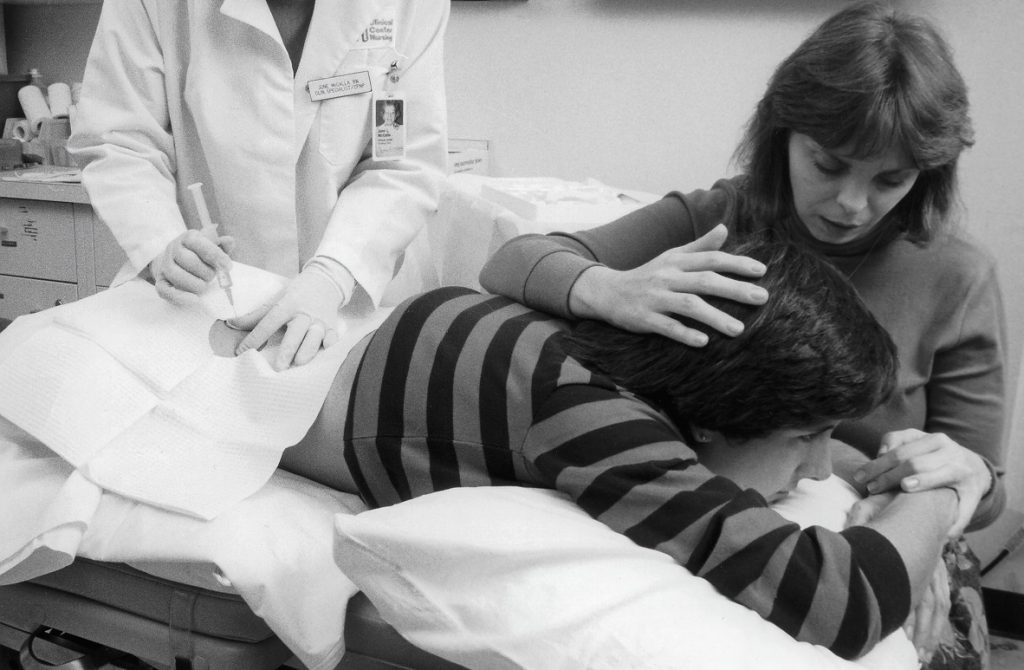Donating Bone Marrow
The patient’s bone marrow is collected for the stem cells required for a bone marrow transplant. They are removed from the donor and inserted into the patient.
The procedure is done in a hospital or outpatient facility. You will probably undergo a procedure known as a peripheral blood stem cell (PBSC) harvest if you agree to donate bone marrow. This is how it goes:
You will receive a daily injection of the white blood cell growth hormone granulocyte colony-stimulating factor (G-CSF) 5 days before the donation.
A skilled healthcare professional will inject a needle into your arms on day 5. A machine circulates the blood while collecting the stem cells with a single hand. The second needle is then used to withdraw blood and return it to your body. The procedure can be done on a second donation day and lasts roughly 3 hours. Headaches, painful bones, and discomfort from the needles during the process are common side effects.
Although less frequent, specific donors might be required to have a bone marrow harvest, in which case health doctors remove bone marrow via surgery from the donor’s hip bone. Donors usually leave the hospital the same day as their surgery and can resume their normal activities one week later. Frequent anesthesia-related adverse effects include nausea, headaches, and exhaustion. Additionally, patients can also experience lower back bruising or soreness.
What’s the benefit of bone marrow donation?
Anyone between 18 and 40 may sign up to become a bone marrow donor. For many people, especially those with hematologic cancers, bone marrow transplants can be a life-saving treatment. These malignancies attack tissues that produce blood, including the bone marrow or immune system cells. Types of hematologic malignancies include:
- Leukemia
- Lymphoma
- Myeloma
A bone marrow transplant may be the only viable treatment for some of these patients. Blood cells that are harmed during aggressive cancer therapies can also be replaced with the use of bone marrow transplants.
Bone marrow transplants can be used to treat a variety of diseases besides cancer, such as:
- Severe aplastic anemia
- Sickle cell anemia
- Severe combined immunodeficiency (SCID)
- Hurler syndrome
- Thalassemia
Approximately 553,368 individuals were expected to be living with hematologic malignancies in 2019 who had received a diagnosis within the previous five years (Trusted Source).
Recovery after donation
You’ll be taken to a recovery room immediately following the procedure. They’ll keep an eye on you for several hours. The majority of donors can return home the same day. However, others might need to stay overnight.
Each person recovers at a different pace. Within a few days, you might be able to return to your regular activities. Elsewhere, bone marrow donation recovery can take up to a month to feel like yourself again. Make sure you adhere to the discharge guidelines from the hospital.
How frequently may bone marrow be donated?
Since your body can rebuild lost bone marrow, you theoretically may donate numerous times. However, simply registering as a donor does not guarantee that you will be matched with a recipient.
It’s uncommon to find numerous possible matches. According to the Asian American Donor Program, a random match may occur a hundred to one million times.
Conclusion
Not sure if you qualify to donate? Do not worry. A screening process will help the safety of the surgery for both you and the receiver. The more people who register, the easier it will be to match donors and receivers. Even though registering implies a commitment, you still have the option to change your mind.


